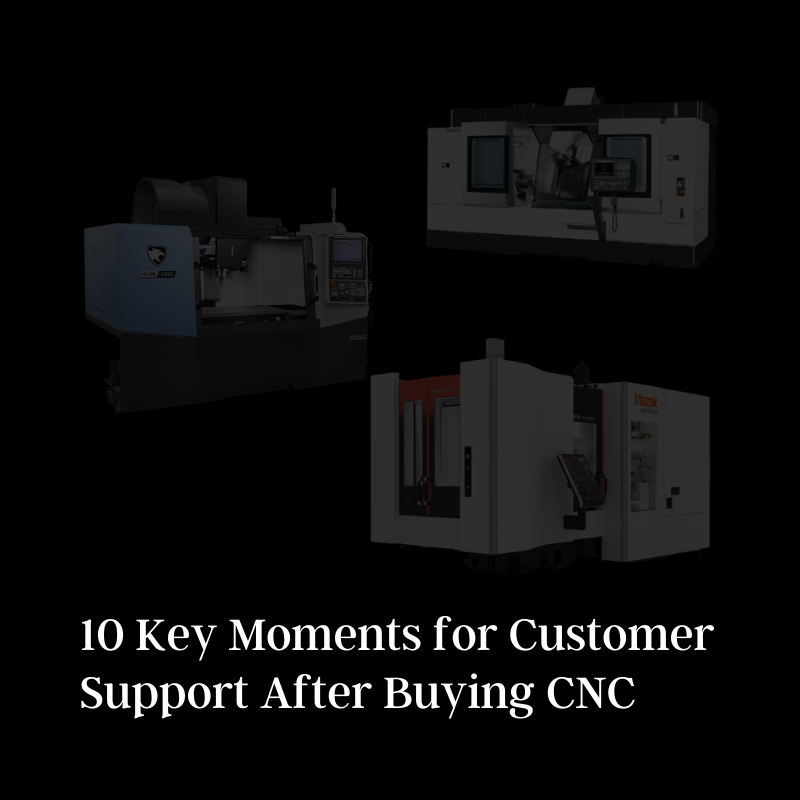Purchasing a CNC machine that doesn't meet your expectations can be incredibly frustrating. Whether you're facing operational flaws, accuracy issues, or reliability concerns, knowing how to navigate this situation is important. I'm here to guide you through turning a seemingly bad investment into a valuable asset for your projects.
When faced with a CNC machine that seems substandard, the first steps involve assessing the issues comprehensively, contacting the supplier for potential resolutions, exploring warranty or return policies, and considering professional servicing or calibration. These initial actions can significantly impact the machine's performance and your satisfaction level.
Identifying and documenting the specific issues with your CNC machine is the foundational step towards remediation. Start by conducting thorough tests to pinpoint operational flaws or inaccuracies. Document these problems with detailed notes and, if possible, video evidence. This documentation will be invaluable when you communicate with the manufacturer or a service technician.
Common issues might include inconsistent cutting accuracy, mechanical failures, software glitches, or unacceptable finish quality. Understanding the nature of these problems not only helps in communicating with support and service professionals but also aids in determining whether the issues are fixable or if the machine simply doesn't meet the advertised specifications.
Contact Supplier After Indication of Failure
Upon identifying any issues with your CNC machine, it's very important to contact the supplier or manufacturer without delay. This immediate action can be important for several reasons: it signals to the supplier that you are careful about the product's performance, it starts the support process rapidly, and it helps ensure that you are within any time-sensitive periods for warranty claims or returns.
Initiate Communication Clearly and Professionally: When you reach out, be clear about the problems you're experiencing. Provide the documentation you've gathered, including detailed descriptions, photos, or videos of the issues. This clarity can prevent any miscommunication and accelerate the troubleshooting or return process.
Understand Your Rights and Their Obligations: Familiarize yourself with the warranty terms and any guarantees provided at the time of purchase. Knowing these details empowers you to have informed discussions and insist on appropriate resolutions.
Explore All Possible Solutions: The manufacturer or supplier may offer several remedies, ranging from technical support and troubleshooting tips to part replacements, professional servicing, or even a machine replacement. Be open to solutions but also firm about your expectations for a fully functional machine.
Document Every Interaction: Keep detailed records of all communications with the supplier, including emails, calls, and any promises or commitments made. This documentation can be vital if disputes arise later on.
Negotiate If Necessary: If the proposed solutions don't meet your satisfaction, don't hesitate to negotiate. Sometimes, suppliers are willing to offer additional support, extended warranties, or discounts on future purchases as a goodwill gesture.
Consider Legal Advice for Significant Disputes: In cases where the dispute cannot be resolved amicably, and you believe your rights as a consumer are being ignored, seeking legal advice might be the next step. This is particularly relevant for high-value machines where the financial stakes are significant.
Leverage Social Media and Review Platforms if Needed: Sharing your experience on social media or industry forums can sometimes expedite the resolution process. Companies are often keen to maintain their reputation and may be more responsive to issues highlighted in public forums.
Engaging with the supplier or manufacturer at the first sign of trouble is a critical step in resolving issues with your CNC machine. By approaching the situation with preparedness, clear communication, and an understanding of your rights, you can navigate this challenging process more effectively, potentially turning a problematic purchase into a valuable asset for your projects.
Exploring Warranty and Return Options
When you find yourself with a CNC machine that doesn't live up to expectations, understanding and navigating the warranty and return policies is your next critical step. These policies are your safety net, offering a potential path to rectify the situation without bearing the entire financial burden.
Review the Warranty Details Thoroughly: Start by reviewing the warranty documentation that came with your CNC machine. Warranties can vary significantly, covering everything from parts and labor to software updates. Identify what aspects of your machine are covered and for how long, as well as any conditions or exclusions that may apply.
Identify the Return Policy Time Frame: If you're considering returning the machine, it's essential to know the window of opportunity. Many suppliers have a set period (often 30 days from purchase) during which returns are accepted. Miss this window, and your options may be significantly limited.
Prepare Your Case: When you approach the supplier or manufacturer for a warranty claim or return, come prepared. Your documentation of the machine's issues, communications with the supplier, and understanding of the warranty and return policy will all support your case.
Contact Customer Service: Reach out to the customer service department to initiate your claim or return. Be clear, concise, and factual about the issues you're experiencing. Your aim is to provide them with all the information they need to understand your situation and how they can resolve it.
Understand the Process: Each company has its process for handling warranties and returns. They may require you to ship the machine back for inspection, provide further evidence of the issues, or fill out specific forms. Clarify these steps early on to avoid any misunderstandings.
Consider Restocking Fees and Shipping Costs: Be aware that even if a return is accepted, you may be responsible for restocking fees or shipping costs. These can add up, especially for large, heavy machines like CNCs. Factor these costs into your decision-making process.
Escalation Procedures: If your initial attempts to resolve the issue through customer service are unsuccessful, inquire about escalation procedures. Many companies have higher tiers of support for unresolved issues, and your case may require additional attention.
Leverage Third-Party Support: In some situations, third-party services or consumer protection agencies can offer assistance or mediation. This option might be worth exploring if you're facing significant resistance or are unsure about your rights.
Negotiate for Alternatives: If a return or full warranty claim isn't feasible, consider negotiating for alternatives. This might include partial refunds, credit towards future purchases, or discounted servicing. Suppliers are often willing to work with you to find a satisfactory resolution.
Exploring your warranty and return options is a key step in addressing issues with a disappointing CNC machine purchase. By understanding your rights, preparing thoroughly, and communicating effectively, you can navigate this complex process towards a positive outcome, ensuring that your investment in CNC technology remains a valuable asset


